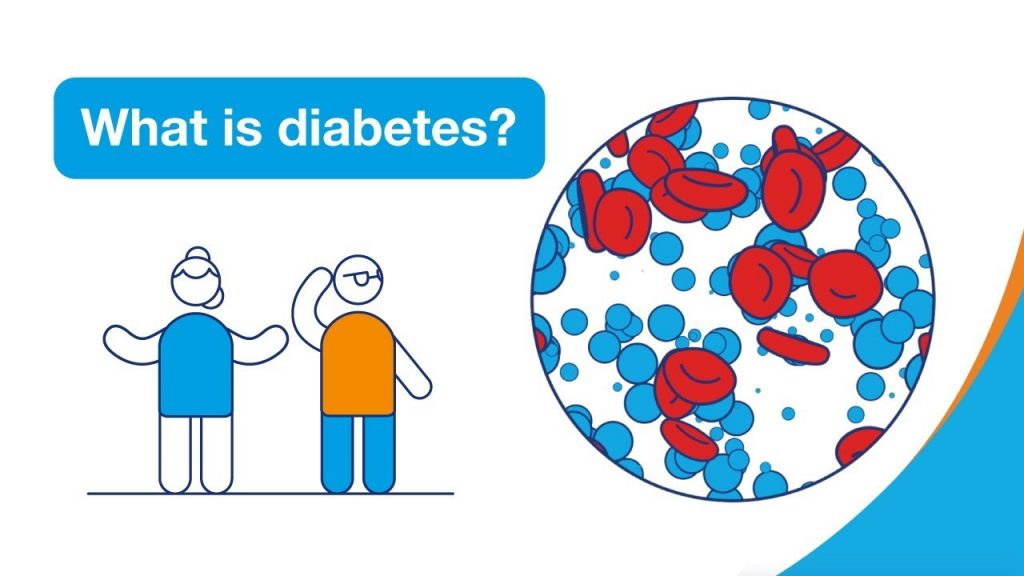Effects of Diabetes on the Body and the Organs
Autonomic body functions like digestion can be as a result of damage to the Nervous System. Gastro paresis occurs when nerve damage prevents digestive system from moving food from stomach in to the small intestine. This condition can result in:
- Acid reflux
- Vomiting
- Abdominal pain
- Bloating
- Wight loss
- Sexual Health
Due to damage of blood vessels and autonomic nervous system, sexual functions may be negatively affected
Erectile dysfunction is more prevalent among diabetic men.
- Fertility
Diabetes affects fertility in both sexes. Irregular menses, delayed menstruation for young starters, early menopause are other effects among women with diabetes. Diabetes can cause pregnancy complications. Diabetic men have lower sperm quality and higher infertility risk.
- Skin
Diabetic people have higher chances of:

- Skin tags
- Dry skin
- Dark skin patches
- Fungal infections(thrush, athlete’s foot)
- Bacterial infections(styes, boils)
- Itching
- Diabetic dermopathy
- blisters
- Metabolic Problems
The body converts nutrients into energy through a process called Metabolism. Once this process is disrupted, various complications arise:
- Diabetic ketoacidosis(DKA)
This complication occurs when the body cannot use the glucose for energy thereby starting to break down fat. Ketones are chemicals released as a result of this process. Ketones are manifested in blood and urine and can make the blood too acidic. DKA is acute and fatal.
Symptoms of DKA include:
- Nausea and vomiting
- Shortness of breath
- Dry mouth
- Stomach pains
- Loss of consciousness and coma
DKA mostly affects students with type 1 diabetes though it can also affect students with type 2 if blood glucose levels rise too high.
- Hyperosmolar hyperglycemic state(HHS)
This condition occurs when blood glucose levels are very high, normally in type 2 diabetes. Symptoms include:
- Confusion
- Dehydration
- Unconsciousness and coma
This condition can be fatal if not attended to.
- Metabolic Syndrome
This refers to collection of various conditions and symptoms such as:
- High blood pressure
- Obesity
- Diabetes
If a person is diagnosed with three out of the following five symptoms, then he has metabolic syndrome:
- Hypertension/high blood pressure
- Large waist size due to body fat around the middle
- High levels of triglycerides in blood
- High fasting blood sugar
- High LDL(bad ) cholesterol and Low HDL(good) cholesterol
Risk factors of diabetes and metabolic syndrome include excess weight and low physical activity
- Mental Health
Once a person is diagnosed with diabetes, his life style definitely. This has effects on mental health of the person. Such effects are:
- Stress
- Anxiety
- Depression
- Bad habits
A person with high blood sugar levels will notice that he needs to urinate frequently and feels thirsty. If this happens, whether you have a diagnosis of diabetes or not, you must see your doctor. Without treatment, diabetes can lead to:
- Confusion
- Loss of consciousness
- Coma
- Death
Ways to minimize the risks of diabetes include:
- Management of blood glucose levels by use of insulin and/or other medications
- Boost overall health-Healthy diet, exercises
- Adherence to doctor’s recommendations.
Diabetes Care in Schools
What are the Specific Needs for Diabetic Students in School Setting? – General Guidelines
- Blood glucose monitoring. Frequency and circumstances necessitating blood glucose check. Use of continuous monitoring and the technologies used
- Insulin administration where applicable. Every student has preferred insulin delivery system, dosage, injection times, carbohydrate intake, which must be adhered to.
- Meals and snacks- food quality/content, quantity and timing.
- Symptoms and treatment of hypoglycemia (low blood glucose) and administration of glucagon following student’s health care giver recommendations.
- Symptoms and treatment of hyperglycemia (high blood glucose) and administration of insulin following student’s health care giver recommendations.
- Physical activity participation
- Emergency evacuation. Lock down instructions, emergency contacts and plans.
Responsibilities of Various Stakeholders
Parents/Guardians must provide the school with:
- All materials, equipment, supplies, medication needed for diabetic management. The parent /guardian is responsible for maintenance of blood glucose monitoring equipment
- DMMP completed and signed by the student’s health care provider.
- Supplies to treat hypoglycemia
- Supplies to treat hyperglycemia
- Information about diabetes management9glucose monitoring and insulin administration)
- Current emergency phone numbers for parent/guardian and student’s health care provider
- Information about student’s meal/ snack schedule
- Signed release of confidentiality to allow student’s care giver to communicate with the school directly.
The School should Provide the following:
- Opportunities to school nurse and school district health care coordinators for training on diabetes.
- Training for school staff in all the three levels:
- Accessibility to Scheduled insulin, immediate accessibility to treatment of hyperglycemia including insulin administration as set by student’s DMMP.
- A private location at school for blood glucose monitoring and insulin administration.
- School nurse and trained school staff, who can check blood glucose and ketones, administer insulin and glucagon and other medications indicated by student’s DMMP.
- School nurse and trained school staff to synchronize student’s meal/ snack schedule with that of school by notifying the parents/guardian in advance of any changes.
- Permission for capable students to perform diabetes management tasks anywhere, anytime.
- Permission for student to see school nurse or trained staff as often as possible.
- Permission for the student to eat a snack anywhere if need be to prevent/treat hypoglycemia.
